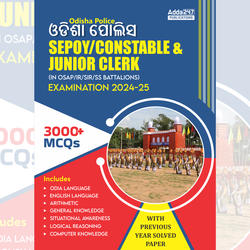Table of Contents
ToggleGeography( the Great North Indian Plains) One-liner Questions for All Competitive Exams
Geography One-liner Questions for All Competitive Exams are essential for quick revision and help strengthen foundational concepts in geography. Covering topics like rivers, mountain ranges, climate, and major landforms, these questions are designed to provide concise, factual knowledge. Perfect for aspirants of exams like UPSC, SSC, and state-level tests, this set ensures efficient preparation in minimal time.
Questions on the Great North Indian Plains
Q1. The Great Plains of India are also known as the:
Q2. Which river system is responsible for the deposition in the Great Plains of India?
Q3. The Bhabar plains are mainly characterized by:
Q4. The Tarai tract is known for its:
Q5. Which of the following is true about the Bhangar plains?
Q6. The Khadar plains are primarily composed of:
Q7. The delta plains of the Ganga are rich in:
Q8. Which crop is not suitable for cultivation in the Delta Plains?
Q9. The Bhabar plains are primarily found in which part of India?
Q10. The fertile plains of the Great Plains of India are primarily formed by the:
Q11. The Bhabar region is not suitable for cultivation due to:
Q12. The soil in the Bhangar plains is rich in:
Q13. Which of the following is a common feature of the Tarai tract?
Q14. The Khadar plains are characterized by:
Q15. The Delta plains are an extension of which of the following?
Q16. The fauna of the Great Plains of India includes all except:
Q17. The Khadar plains are mainly used for the cultivation of:
Q18. The Gaur is found in the:
Q19. The Great Plains of India are important because:
Q20. The Sumatran rhinoceros is now found only in:
Answers:
S1. (b) Indo-Gangetic Plains
S2. (c) Indus
S3. (b) Gravel and un-assorted sediment deposits
S4. (b) Malarial climate and marshy land
S5. (c) It is formed in the middle Pleistocene period
S6. (b) Fresh silt and mud deposits
S7. (c) Old and new mud deposits
S8. (d) Maize
S9. (c) Northern region
S10. (c) Himalayan Rivers
S11. (b) Gravel and unassorted sediments
S12. (d) All of the above
S13. (b) Thick forests and high humidity
S14. (b) Fresh sediment deposits from rivers
S15. (b) Khadar plains
S16. (c) White Rhinoceros
S17. (b) Sugarcane, wheat, rice, and maize
S18. (c) Tarai tract
S19. (b) They are fertile and support major agricultural production
S20. (c) Indonesia
|
Question Of the Day Comment the answer |
| The river that forms the largest delta in the world is: (a) Ganges (b) Amazon (c) Nile (d) Mississippi |














